Vintage drum gear: Leedy & Ludwig and Ludwig & Ludwig
Two classic kits bearing the Ludwig name
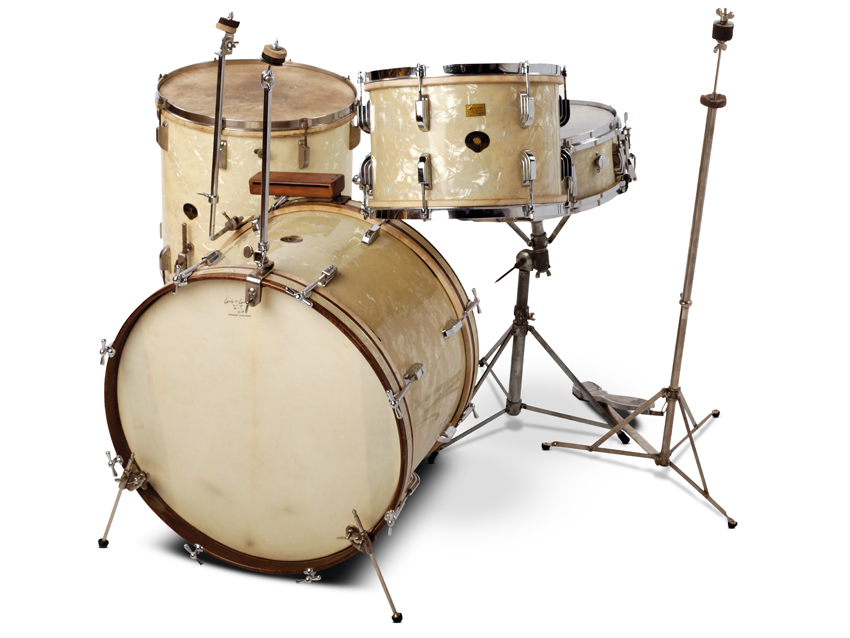
Leedy & Ludwig Marine Pearl kit
Each month Rhythm Magazine tracks-down and checks-out vintage gear in order to marvel at a bit of drum-making history. Here we have two exquisite examples of the evolution of the Ludwig name...
In the 1930s and 1940s Leedy Drums and Ludwig & Ludwig Drums were produced side-by-side by CG Conn, the famous US band instrument manufacturer.
Around 1950, Conn was finally compelled to rationalise and for a few years produced a single line, Leedy & Ludwig drums. These drums were an amalgamation of the two marques.
Mark Jeffs of Rusty Drums (www.rustydrums. co.uk) obtained this kit via eBay from the New York family of the original owner who bought the kit new in 1951.
“He bought the bass drum, snare drum and rack tom, adding the floor tom about six months later,” says Mark. “He couldn’t afford chrome plating on the floor tom so it’s nickel-plated instead.
“His daughter told me he only gigged with the floor tom and snare drum, while the bass drum and rack tom never left the house. Which is why they have the original calf heads on them and are immaculate.
“The floor tom also has its original calf batter with a plastic resonant, while the snare has its original resonant and a plastic batter. The toms have stick-chopper single-flanged hoops and claws.”
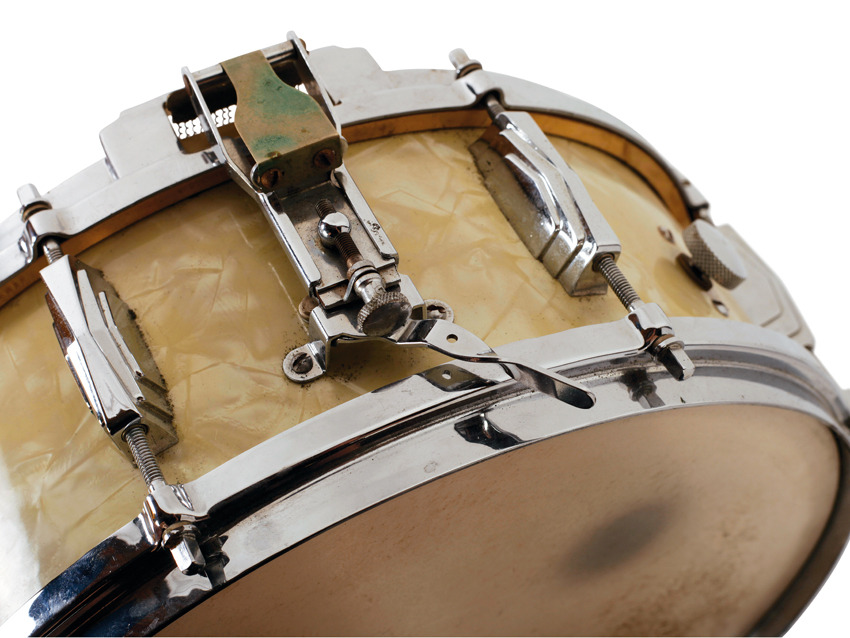
Leedy & Ludwig Marine Pearl kit
The kit is in standard sizes, 22x14-inch, 13x9-inch, 16x16-inch and 14x5-inch snare.
“The original drums are date-stamped inside ‘0951’: September ’51,” says Mark.
The Leedy and Ludwig amalgamation is evident in the way the bass drum and toms have Leedy beavertail lugs while the snare has eight Ludwig Imperial lugs, like those on Ludwig’s SupraPhonics.
Ludwig hardware was usually relegated to the cheaper models, but this snare has double-flanged die-cast hoops and the Leedy Broadway Standard Extension snare strainer with brass ‘throw-off bands’ and 20 strand extended snare wires.
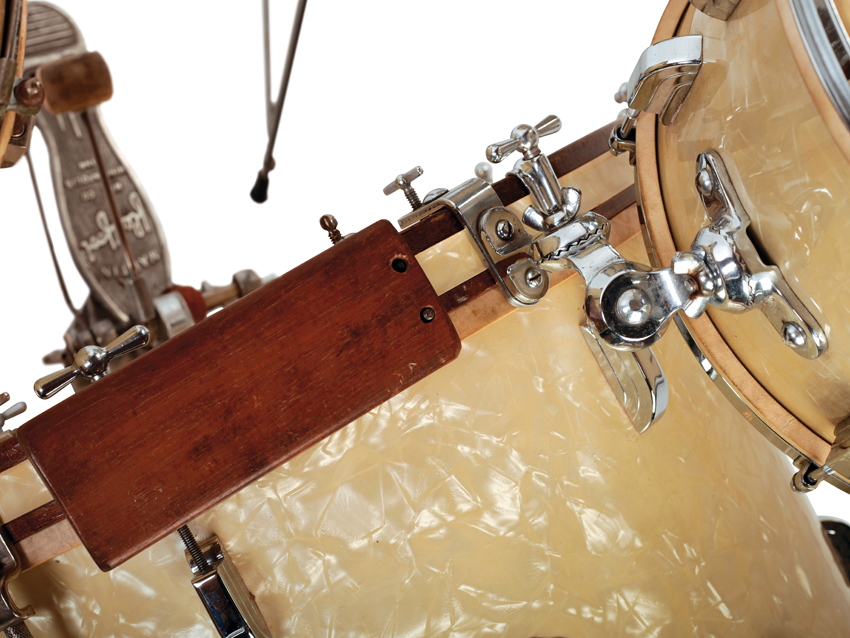
Leedy & Ludwig Marine Pearl kit
The hardware’s also original, with a Leedy hi-hat stand and popular Martin Fleetfoot pedal with leather strap and wooden beater with felt on one face.
“This particular Buck Rogers snare stand was patented in 1941,” says Mark. “It’s an early model with a matt grey painted finish as opposed to a plated finish.
“Leedy and Ludwig is embossed on the tom bracket and the kit came with Buddy Rich WFL signature sticks plus a couple of pairs of brushes and traps case. There’s a dealer sticker on the small tom from the Henry Adler store where it was bought.”
Mark concludes, “I have not gigged the kit, but I took it to a studio to record a clip for my website. I’d never played anything with calf heads before but I was blown away by the warm and rounded sound. Phenomenal. I have it up for sale on the website but I am in two minds about parting with it.”
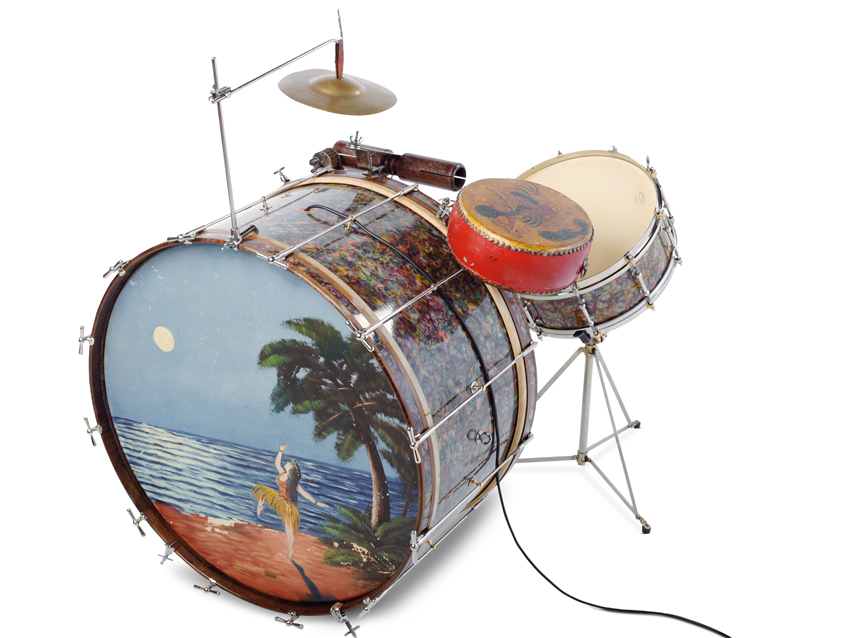
Ludwig & Ludwig Peacock Pearl kit
This next kit comes from the days before the two great names of Leedy & Ludwig were forced together under the cost-cutting auspices of the CG Conn company.
The original Ludwig company was founded by brothers William and Theo Ludwig. Theo succumbed to the flu epidemic of 1918. But his part in founding that most illustrious of companies lives on in this dazzling Ludwig & Ludwig kit.
This was a typical set-up before Gene Krupa came along in the mid 1930s with his tuneable tom toms and defined the modern kit. It’s a perfectly preserved example of how the drum kit started to take shape in the jazz age and we are grateful that Wigan drummer and collector Dave Brown brought it along to the National Drum Fair last Autumn.
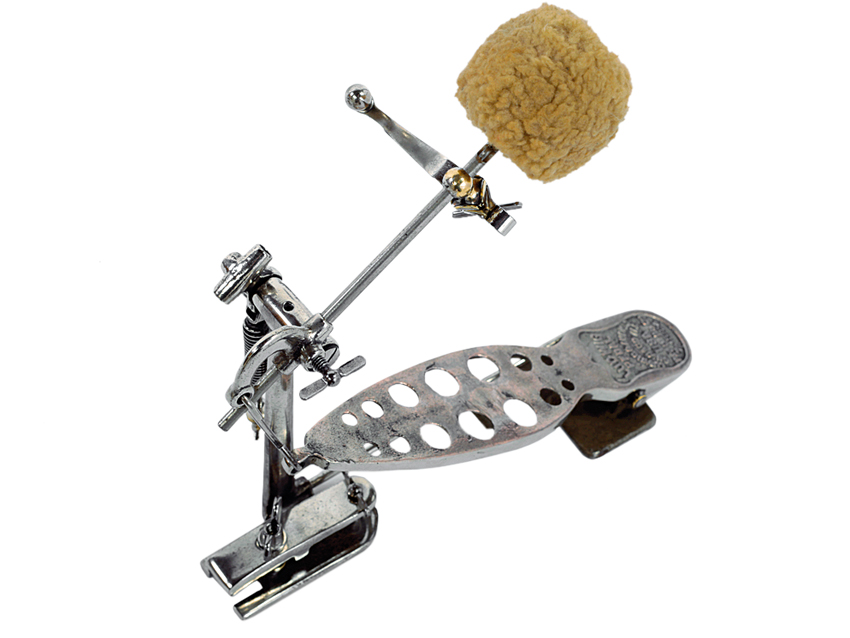
Ludwig & Ludwig Peacock Pearl kit
Somehow this kit has survived the last 80 years in showroom condition. It consists of a big old 28x14-inch Artist’s mahogany bass drum and 14x5-inch maple snare drum augmented with various contraptions.
There’s a ratchet, a dual-pitched wood block and a Chinese tom along with a suspended cymbal and bass drum pedal with a 'clanger' cymbal extension.
It’s almost exactly as it appears in the 1929 Ludwig catalogue. The bass drum pedal is a 1924 single-post Ludwig, similar to the first ever widely available spring action pedal with which the Ludwig brothers had kicked off their business in 1909.
The snare is a Standard model with a shell and reinforcing rings both of solid maple. There are 'stick chopper' single-flanged hoops and 10 tube lugs with hooks, all in nickel-plated brass.
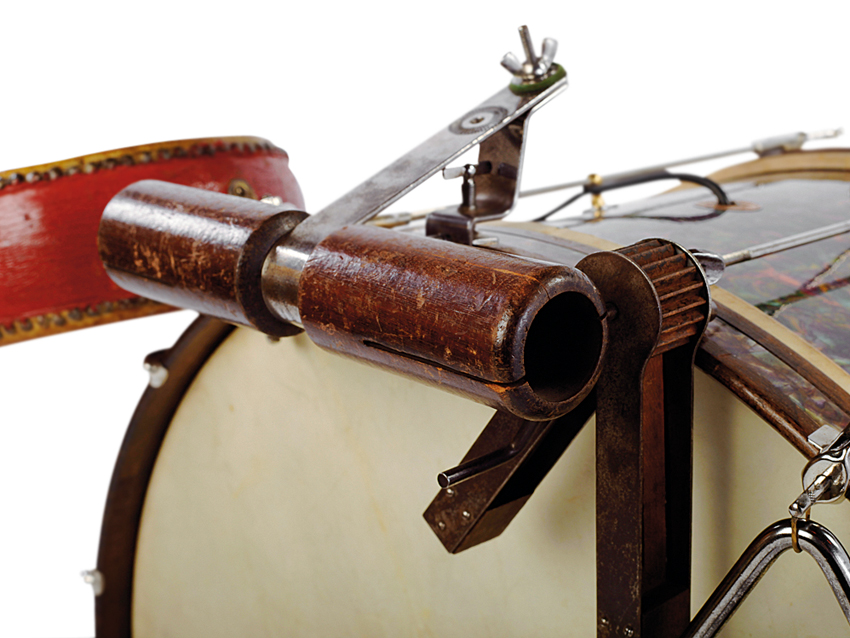
Ludwig & Ludwig Peacock Pearl kit
The most stunning feature is probably the Peacock Pearl finish. Wraps were a new thing back then - drums were previously painted or stained. So this glorious Pyralin celluloid plastic must have had a serious wow factor. Still does!
On top of this you can’t miss the painted front head of a dancing girl on a tropical island. Ludwig offered various standard scenes for around an extra 10 or 12 dollars - you could even request personalised paintings from the artists employed in the factory!
Then there’s the electrical lead coming-out of the bass drum’s air hole. Because drums had hide heads, which were affected by humidity and temperature, drums routinely had heating elements inside and also coloured light bulbs.
Dave Brown says he’s seen up to six bulbs in a single bass drum! These could be made to flash and bring to life the hand-painted scene on the front.
Vintage Gear continues each month in Rhythm Magazine.

Geoff Nicholls is a musician, journalist, author and lecturer based in London. He co-wrote, co-presented and played drums on both series of ‘Rockschool’ for BBC2 in the 1980s. Before that he was a member of original bands signed by Decca, RCA, EMI and more. ‘Rockschool’ led to a parallel career writing articles for many publications, from the Guardian to Mojo, but most notably Rhythm magazine, for which he was the longest serving and most diverse contributor.